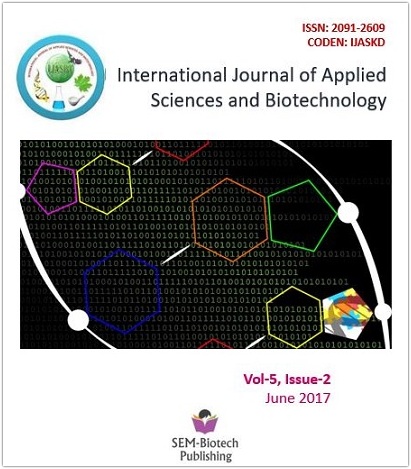Induction of Cytotoxicity by Selected Nanoparticles in Chinese Hamster Ovary-K1 Cells
DOI:
https://doi.org/10.3126/ijasbt.v5i2.17619Keywords:
nanoparticles, cytotoxicity, CHO-K1 cells, MTT, LDHAbstract
The aim of the present study is to analyze the cytotoxicity of selected nanoparticles on Chinese Hamster Ovary-K1 (CHO-K1) cells using methyl tetrazolium (MTT) assay and lactate dehydrogenase (LDH) release assay. Four different metal oxide nanoparticles namely silicon dioxide (SiO2-NPs, 1 nm), aluminium oxide (Al2O3-NPs, 16.7 nm), titanium dioxide (TiO2-NPs, 11.4 nm) and iron oxide (Fe3O4-NPs, 15.65 nm) were exposed to CHO-K1 cells at 25, 50, 75 and 100 µg/ml concentrations for 24 h maintaining the control group. The percentage of cell viability using methyl tetrazolium (MTT) assay showed significant reduction in cell viability from 63.82 to 31.19% in SiO2-NPs, 96.68 to 34.14% in Al2O3-NPs, 65.69 to 14.32% in TiO2-NPs and 120.69 to 59.86% in Fe3O4-NPs when compared with the untreated cells. Assessment of cytotoxicity by using lactate dehydrogenase (LDH) release assay revealed that Al2O3–NPs showed more cytotoxicity followed by Fe3O4-NPs, TiO2-NPs and SiO2-NPs in concentration-dependent manner. Therefore, it is reasonable to conclude that size and the composition of the nanoparticles could contribute to the relative cytotoxicity in CHO cells.
Int. J. Appl. Sci. Biotechnol. Vol 5(2): 203-207




